18+ SAMPLE Cricket Club Development Plan
-
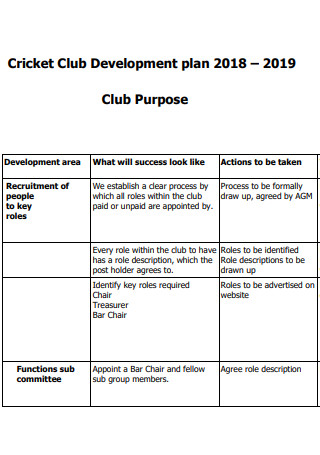
Cricket Club Development Plan
download now -
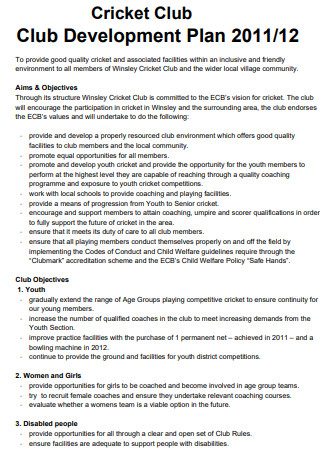
Sample Cricket Club Development Plan
download now -
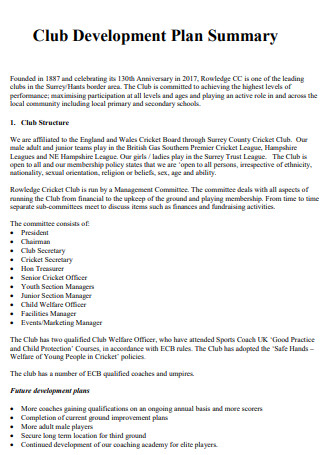
Cricket Club Development Plan Summary
download now -
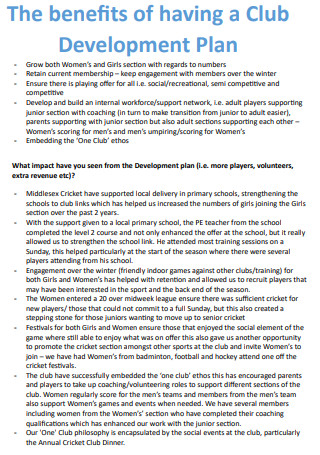
Benefits of Having Cricket Club Development Plan
download now -
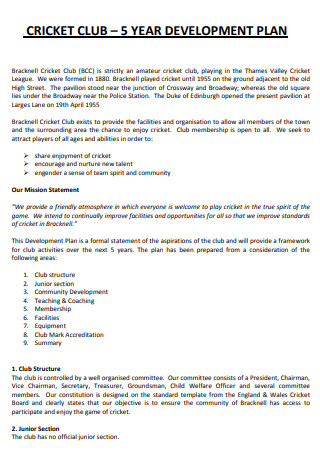
5-Year Cricket Club Development Plan
download now -
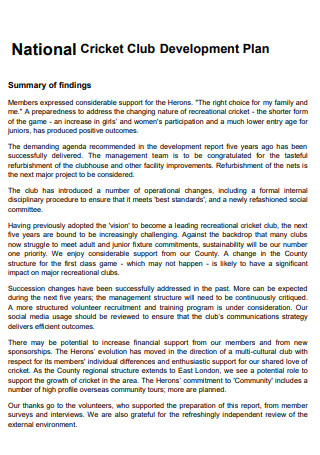
National Cricket Club Development Plan
download now -

Simple Cricket Club Development Plan
download now -
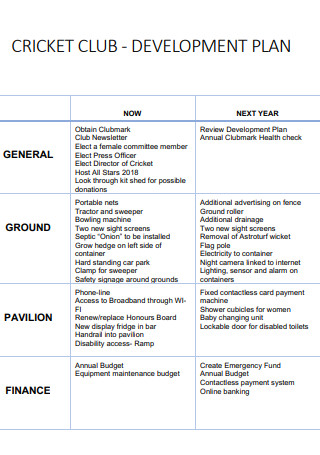
Formal Cricket Club Development Plan
download now -
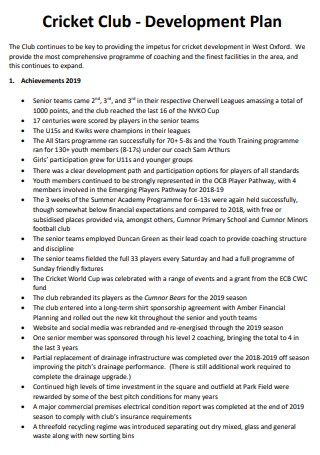
Basic Cricket Club Development Plan
download now -

Standard Cricket Club Development Plan
download now -
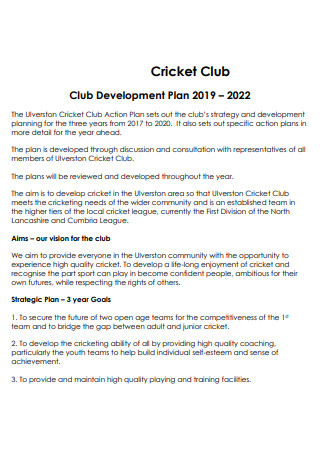
Cricket Club Strategy And Development Plan
download now -
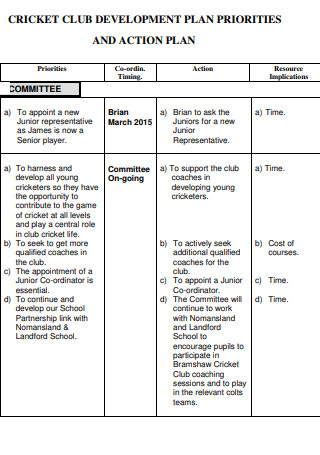
Cricket Club Development Plan Priorities And Action Plan
download now -
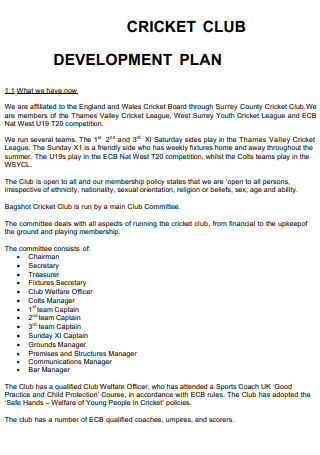
Cricket Academy Club Development Plan
download now -
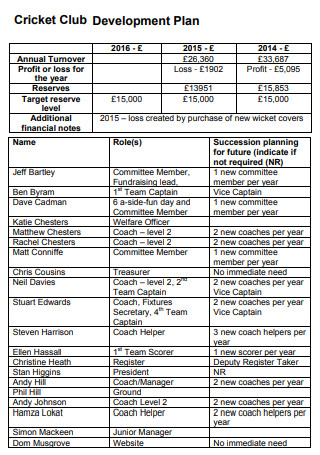
Cricket Club Development Plan Example
download now -
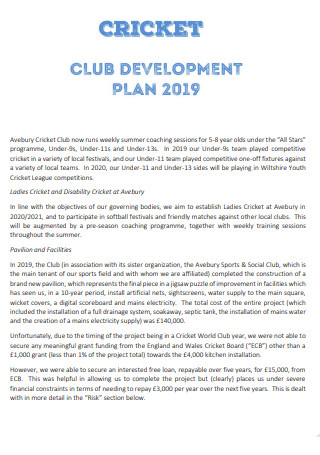
Cricket Club Development Plan Template
download now -
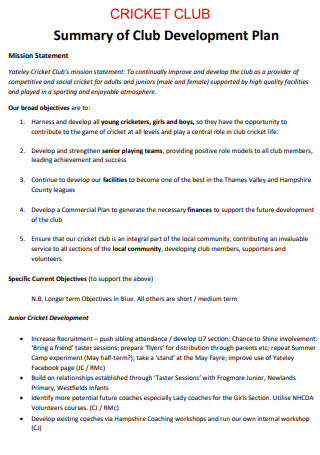
Cricket Club Development Plan in PDF
download now -
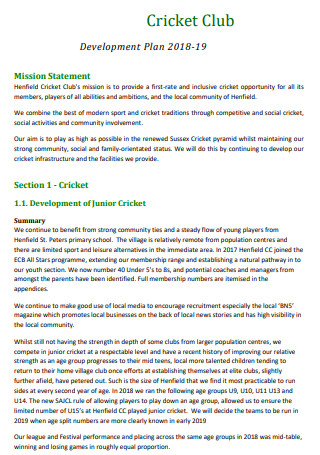
Professional Cricket Club Development Plan
download now -
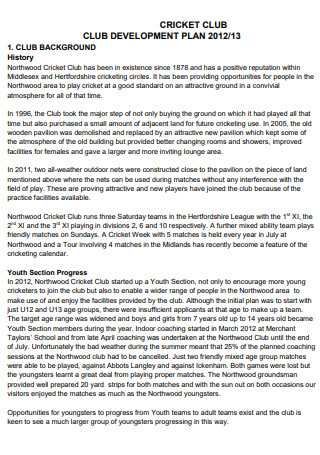
Printable Cricket Club Development Plan
download now -

Editable Cricket Club Development Plan
download now
FREE Cricket Club Development Plan s to Download
18+ SAMPLE Cricket Club Development Plan
What Is a Cricket Club Development Plan?
What’s In a Cricket Club Development Plan?
How to Create a Cricket Club Development Plan
FAQs
What is a test cricket match?
What does club cricket mean?
What is Twenty20 cricket?
What Is a Cricket Club Development Plan?
Before we define the entire document, perhaps it’s a good idea to get familiarized with the sport of cricket first. Cricket is a bat-and-ball sport played all over the world. It has been around for almost 300 years and is one of the most popular sports events on the planet. This sport is played on a field with a 20-meter pitch with a wicket at each end between two teams of eleven players, with the bowler throwing the ball and the batter attempting to hit it in order to score runs. Despite the fact that cricket has been around for a long time and is known as a traditional sport with many long-standing traditions and values, it has managed to stay relevant in modern times by adapting different styles such as Five-day test matches, One-day international cricket, and Twenty20 cricket.
Cricket clubs (even those at the amateur level) can adopt these different styles in order to get their new members familiarized with how the game works. In order to hone their members so that they can have a shot at playing professionally, the best way to start is by having to work on themselves first, which having a cricket club development plan can be of great help. This is a business document that essentially serves as a cricket club’s business plan. It specifies the club’s long-term goals, as well as the methods by which they will be achieved. In essence, this document is intended to aid cricket clubs in their future planning. A cricket club development plan will assist a club in defining its mission and encouraging a coordinated approach to achieving its objectives. Furthermore, this document assists clubs in securing their future, attracting new members, supporting club personnel and volunteers, and ensuring effective use of their resources.
What’s In a Cricket Club Development Plan?
The following elements listed below are some of the key components that make up an effective cricket club development plan, so keep them in mind:
How to Create a Cricket Club Development Plan
Here are the different steps that are needed to create an effective cricket club development plan; keep in mind that each step of creating the development plan answers a different question.
1. Address the Club’s History
The first step of creating the cricket club development plan addresses the club’s history. In other words, this addresses the question “Where has the club come from?”. In this step, provide a general overview of the cricket club including a short history of the club. This section details all of the club’s significant events and accomplishments throughout its history. It gives an outline of the club’s history and the important figures engaged in its formation. Include the club’s history in the growth plan for a variety of reasons, including increased pride in the organization, the generation of ideas that may benefit your organization, showcasing longevity to attract members and volunteers, and many others.
2. Address the Club’s Current Situation
The next step of creating the cricket club development plan should address the club’s current situation. To put it short, this step answers the question “Where is the club now?”. Create an explanation of the club’s present situation and include a quick audit of the club’s existing operations in this phase of the club growth plan. The most straightforward approach to do this stage is to conduct a SWOT Analysis, which helps determine the cricket club’s strengths, weaknesses, opportunities, and threats in the near future. The club’s involvement and membership, the club’s training techniques, the club’s marketing and communication, the club’s finances, and so on may all be examined as part of the study.
3. Address the Club’s Aims
The next step of creating this development plan should place emphasis on the future aims of the cricket club. In other words, this step should address the question “Where does the club want to be in the future?”. The club must consider where it intends to be in the future at this step and must be prepared to consider its goals in the near future. It is important to remember that the goals must be reasonable in terms of time, money, and resources. The club should also be able to capitalize on its strengths, manage its weaknesses, take advantage of opportunities, and be alert to possible threats. The club may also wish to consider the context of its goals for each of the categories examined when the SWOT analysis was being performed.
4. Address the Club’s Plans
The next step of creating the cricket club development plan should emphasize addressing the club’s plans. In this step, the question that needs to be addressed is “How will the club get there?”. This step of creating the development plan involves prioritizing the aims that were identified in the previous step. These should then be subdivided into precise goals for each time period, as well as how they will be met. This stage will then serve as the foundation for the cricket club’s action plan. The plan should then be distributed. Make sure all members, sponsors, and partners have access to the strategy because it is the club’s document.
5. Make a Review
The last step of creating the cricket club development plan should involve making a review of the entire document. This step addresses the question “How will the club determine if the targets have been met?”. The most significant aspect of the club development plan is tracking progress against the club’s goals on a regular basis. This will let everyone recognize when the club has accomplished something and guarantee that the group continues to progress on the correct path. Remember that the plan is a living document that may be changed to accommodate unanticipated delays, staff changes, budget challenges, and so on.
FAQs
What is a test cricket match?
Test cricket is the longest format of cricket and is regarded to be the highest grade of the game. National representative teams that have been awarded test status by the sport’s governing organization compete in test matches. Matches are dubbed tests because they are cognitively and physically demanding due to their length and grueling nature. It’s also known as a five-day test match since the game lasts five days and each day consists of three two-hour sessions.
What does club cricket mean?
Club cricket is a kind of cricket that exists in addition to professional cricket. It is a mostly amateur, but nonetheless formal, version of cricket that often involves clubs competing in the weekend or nighttime tournaments. Club cricket is often played in a league or cup format, with games restricted by time or overs. Saturday league cricket is the most serious version of the game.
What is Twenty20 cricket?
Twenty20 cricket, or T20 cricket, is a popular game format of cricket in addition to test cricket. It is a shortened cricket game style that takes around three hours to finish. It is substantially shorter than earlier variants of the game and more comparable to the duration of other popular team sports. It was created to produce a fast-paced game that would appeal to both on-field fans and television viewers.
Engaging in sports can be fun. It can even be more fun when someone joins a club since he/she has an opportunity to hone his/her skills with the aid of someone qualified, along with the chance of getting recognized by someone who can get them promoted to the professional level. This is true with nearly every sport including cricket. For cricket clubs to be sustainable in their operations and for them to be able to attract more members, a proper development plan needs to be in place. In this article, plenty of sample templates exists for you to have a better understanding of what this document is about.
